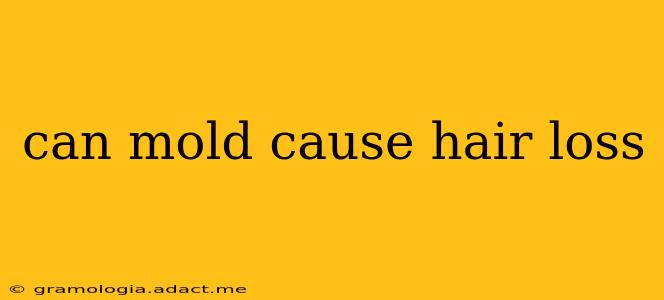Mold. Just the word conjures up images of damp basements and musty smells. But beyond the unpleasant aesthetics, could this pervasive fungus be silently contributing to a much more concerning problem: hair loss? The answer isn't a simple yes or no, but rather a nuanced exploration of how mold exposure can indirectly, and sometimes directly, impact hair health.
What is Mold and How Does it Affect Us?
Mold is a type of fungus that thrives in damp, dark environments. It releases spores into the air, which we can inhale or come into contact with through skin contact. While many people experience no adverse effects from mold exposure, some individuals are more sensitive and can develop allergic reactions, ranging from mild respiratory irritation to more severe conditions like asthma.
Can Mold Directly Cause Hair Loss?
While mold itself doesn't directly attack hair follicles in the way that, say, a genetic condition might, it can create an environment conducive to hair loss through various mechanisms. The most direct link comes from fungal infections of the scalp, such as tinea capitis (ringworm). This fungal infection can lead to inflammation, itching, and ultimately hair loss in the affected area. However, it's important to note that tinea capitis is a specific fungal infection and not all mold exposure results in this condition.
How Does Mold Indirectly Contribute to Hair Loss?
The indirect connection between mold and hair loss is arguably more significant and involves several pathways:
1. Stress and Hormonal Imbalances:
Chronic exposure to mold can cause significant stress on the body. This stress can disrupt hormone levels, potentially leading to telogen effluvium, a type of hair loss characterized by a shedding of hair due to stress-induced hormonal changes. The body prioritizes essential functions during stress, and hair growth is often one of the first things to be affected.
2. Nutritional Deficiencies:
Mold exposure can trigger allergic reactions and inflammatory responses, potentially leading to digestive issues and nutrient malabsorption. Essential vitamins and minerals crucial for hair growth, such as iron, zinc, and biotin, may become deficient, contributing to hair thinning and loss.
3. Weakened Immune System:
Constant exposure to mold can weaken the immune system, making individuals more susceptible to infections, including those that can directly affect the scalp and hair follicles. A compromised immune system also hampers the body's ability to effectively repair and regenerate hair.
Does Mold Allergy Cause Hair Loss?
Mold allergies themselves don't directly cause hair loss, but the resulting inflammation and chronic stress from allergic reactions can contribute to hair shedding. The body's constant fight against allergens diverts resources away from hair growth.
How to Address Mold-Related Hair Loss Concerns?
If you suspect mold exposure might be contributing to your hair loss, it’s crucial to address the root cause. This involves:
- Identifying and remediating mold: Having your home professionally tested for mold and implementing appropriate remediation strategies is the first step.
- Addressing underlying health conditions: Consult with a dermatologist or allergist to rule out other potential causes of hair loss and to treat any related allergies or infections.
- Adopting a healthy lifestyle: A balanced diet rich in vitamins and minerals, stress management techniques, and regular exercise can support overall health and hair growth.
Conclusion
The relationship between mold and hair loss is complex. While mold doesn't directly cause hair loss in most cases, its indirect effects through stress, inflammation, and nutritional deficiencies can significantly contribute to hair thinning and shedding. If you're experiencing hair loss and suspect a mold-related issue, seeking professional medical advice is essential for accurate diagnosis and effective treatment. Remember, addressing the underlying issue—mold exposure and its associated health problems—is key to regaining healthy hair.
